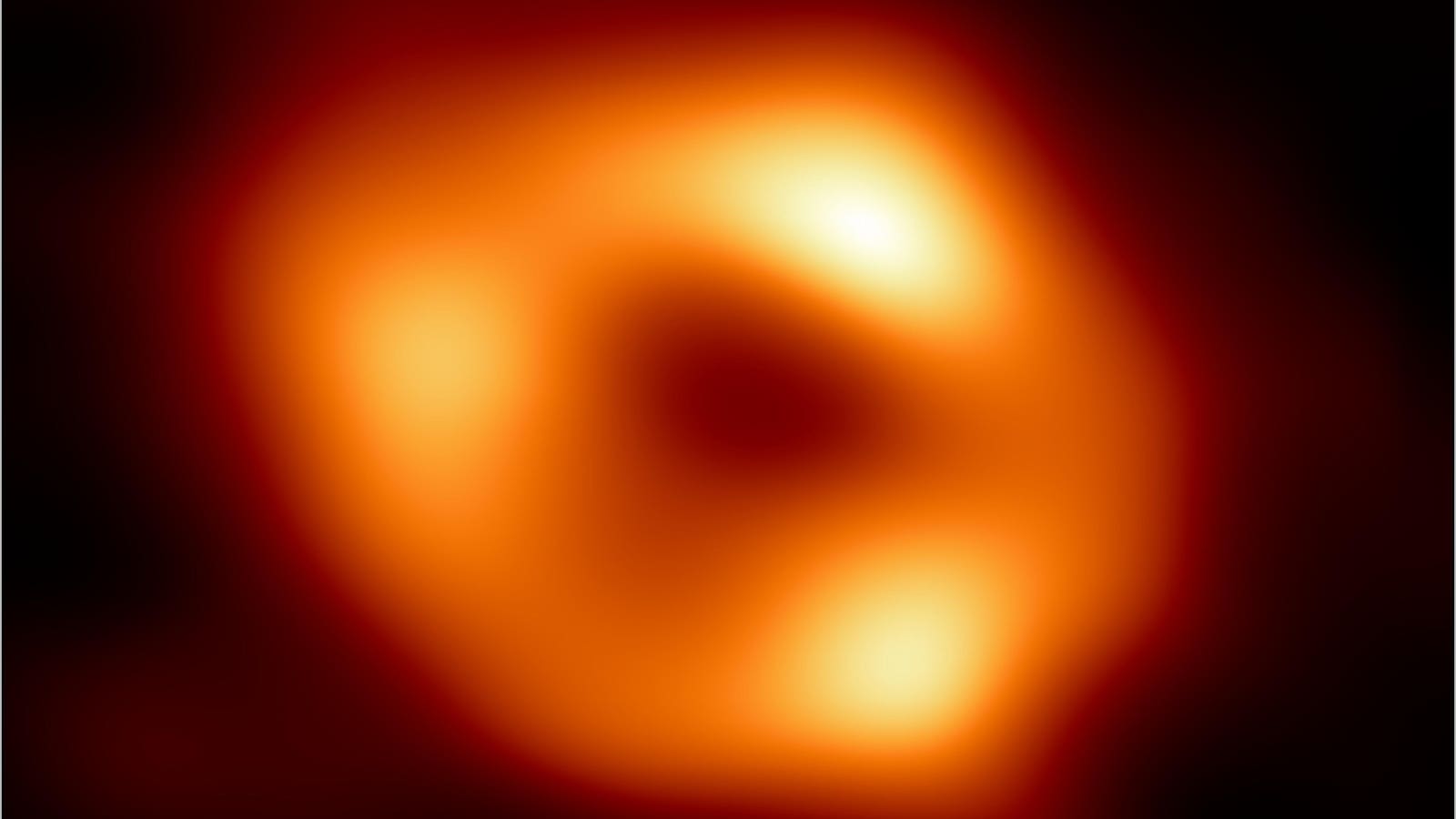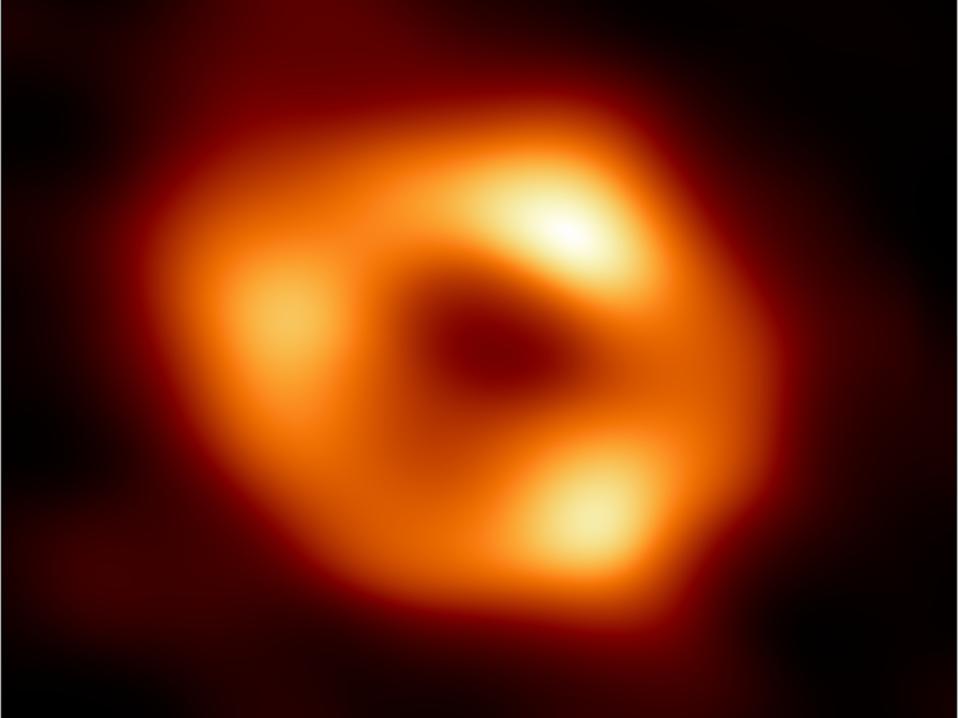The Event Horizon Telescope (EHT) Collaboration created a single image (top frame) of the supermassive black hole at the centre of our galaxy, called Sagittarius A*. (Photo by NASA Via Getty Images)
EHT Collaboration
A spacecraft no larger than a paperclip, launched on a laser beam and traveling at near-light-speed on a 100-year voyage to the nearest known black hole. If successful, it would return data from close to the event horizon itself — the point of no return — after which gravity will consume it forever.
This is the incredible mission being proposed by an astrophysicist after the answer to a fundamental question in science: Was Albert Einstein right?
Black Hole Mission: Testing Einstein
Although he describes it as both “speculative” and “challenging” (as well as costing around $1 trillion), black hole expert Cosimo Bambi at Fudan University, China, thinks it will soon be possible to design a mission capable of reaching a black hole within a human lifetime. Outlined today in a paper published in the journal iScience, Bambi’s vision includes a gram-scale nanocraft propelled by Earth-based lasers. Its mission would be to test the limits of Einstein’s theory of general relativity, published in 1915, which states that mass curves space-time, which in turn tells mass how to move. It also predicted the existence of black holes.
The data collected by the probe could, says Bambi, alter scientists’ understanding of general relativity and the rules of physics.
The Event Horizon Telescope captures a black hole at the center of galaxy M87, outlined by emission from hot gas swirling around it under the influence of strong gravity near its event horizon, in an image released on April 10, 2019. (Photo by National Science Foundation via Getty Images)
Getty Images
Black Hole Mission: The Destination
A black hole is a region of space-time where gravity is so strong that nothing can escape — not even light. The Milky Way has a supermassive black hole, Sagittarius A* (or Sgr A*, pronounced “sadge-ay-star”), at its center. About 22 million miles across, it’s about 27,000 light-years from the solar system at the galaxy’s center and in March, scientists published a new polarised light image of the strong magnetic fields spiraling from its edge. That came in the wake of its groundbreaking images of a black hole at the heart of distant galaxy Messier 87 in 2019 and Sagittarius A* in 2022.
This new mission won’t go to Sagittarius A*, but to another as yet unfound black hole around 20-25 light-years from Earth, which probably exists. “There have been new techniques to discover black holes,” says Bambi. “I think it’s reasonable to expect we could find a nearby one within the next decade.” It’s challenging since black holes are virtually invisible to telescopes — their presence can only be inferred by their effect on nearby stars and light.
In February 2016, gravitational waves were finally detected, 100 years after Einsteins prediction. The waves emanated from the collision of two black holes, of 36 and 29 solar masses, some 1.3 billion light years away.
getty
Black Hole Mission: The Long Wait
There’s no rush to locate the closest black hole to the solar system because there is currently no way of launching such a mission. “We don’t have the technology now,” says Bambi. “But in 20 or 30 years, we might.”
The hope is that nanocrafts made from just a microchip and light sail could be blasted into space by Earth-based lasers at a third of the speed of light. With that speed, it would take about 70 years to traverse 20-25 light-years.
Once at the black hole, the spacecraft would investigate whether the event horizon exists and whether the rules of physics change near a black hole. With that data collected, it would transmit it back to Earth, a process that would take 20 years. That makes the total mission duration about 80-100 years. “It may sound really crazy, and in a sense closer to science fiction,” says Bambi. “But people said we’d never detect gravitational waves because they’re too weak. We did — 100 years later. People thought we’d never observe the shadows of black holes. Now, 50 years later, we have images of two.”
Wishing you clear skies and wide eyes.









